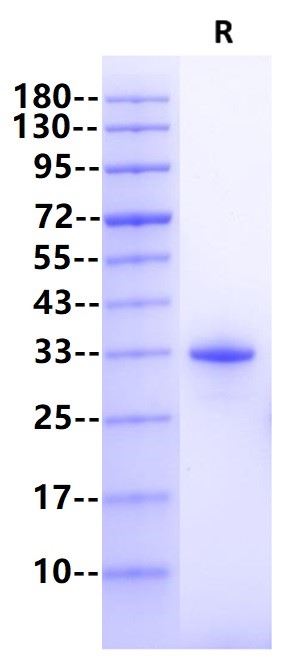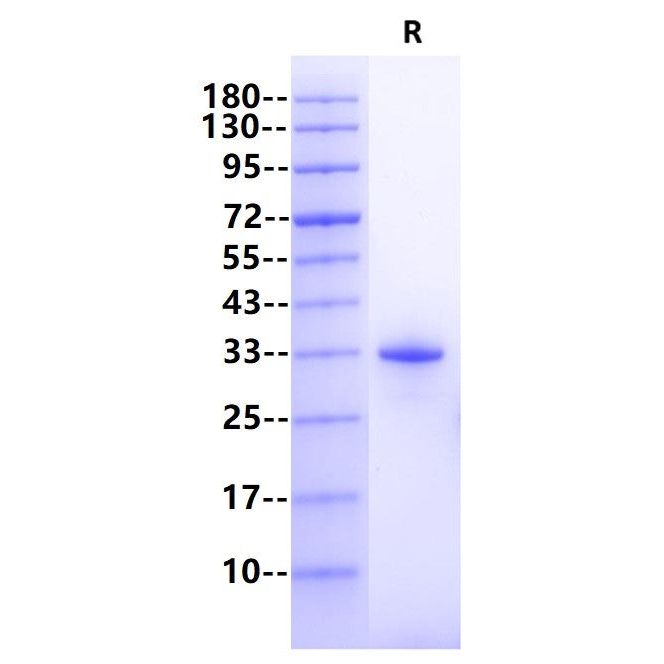Product Details
Product Details
Product Specification
| Species | Human |
| Synonyms | IgG4 Fc;Human IgG4 Fc protein, Ig gamma-4 chain C region, IgG4 Fc |
| Accession | P01861 |
| Amino Acid Sequence | ESKYGPPCPSCPAPEFLGGPSVFLFPPKPKDTLMISRTPEVTCVVVDVSQEDPEVQFNWYVDGVEVHNAKTKPREEQFNSTYRVVSVLTVLHQDWLNGKEYKCKVSNKGLPSSIEKTISKAKGQPREPQVYTLPPSQEEMTKNQVSLTCLVKGFYPSDIAVEWESNGQPENNYKTTPPVLDSDGSFFLYSRLTVDKSRWQEGNVFSCSVMHEALHNHYTQKSLSLSLGK |
| Expression System | HEK293 |
| Molecular Weight | 30-32 KDa(Reducing) |
| Purity | >95%, by SDS-PAGE under reducing conditions |
| Endotoxin | <0.1EU/μg |
| Conjugation | Unconjugated |
| Physical Appearance | Lyophilized Powder |
| Storage Buffer | PBS, pH7.4, 5% trehalose |
| Reconstitution | Reconstitute at less than 1 mg/mL according to the size in ultrapure water after rapid centrifugation . |
| Stability & Storage | · 12 months from date of receipt, lyophilized powder stored at -20 to -80℃. · 3 months, -20 to -80℃ under sterile conditions after reconstitution. · 1 week, 2 to 8℃ under sterile conditions after reconstitution. · Please avoid repeated freeze-thaw cycles. |
Background
Immunoglobulin G4 (IgG4), one of the four human IgG subtypes, is a monomer immunoglobulin mainly involved in secondary antibody reaction, which is produced and secreted by B cells. The IgG tetramer consists of two heavy chains (50 kDa) and two light chains (25 kDa) connected by disulfide bonds, which are two identical halves to form a Y shape. After pepsin cleavage, IgG was divided into two F (ab) s with one antigen binding site and a highly conserved Fc segment. The Fc segment has a highly conserved n-glycosylation site. IgG4 is the least common IgG among healthy adults, accounting for about 5% of the total IgG library. Although the amino acid sequence of IgG4 is about 90% homologous to other IgG subclasses, IgG4 is unique because it is a univalent function with little or no inflammation, and IgG4 Fc can bind to other Fc from all human IgG subclasses. IgG4 is generally considered to be a protective blocking antibody because it can inhibit or prevent inflammation by binding to inflammatory IgG subclasses or IgE competitive antigens. In addition, IgG4 can cause a subset of autoimmune diseases in severe diseases.
Picture
Picture
SDS-PAGE

RP-HPLC




